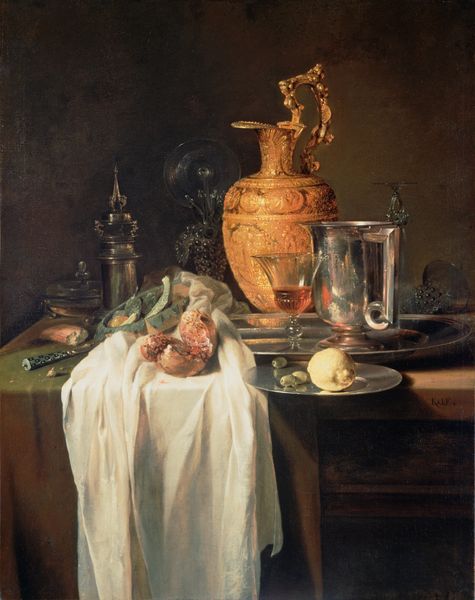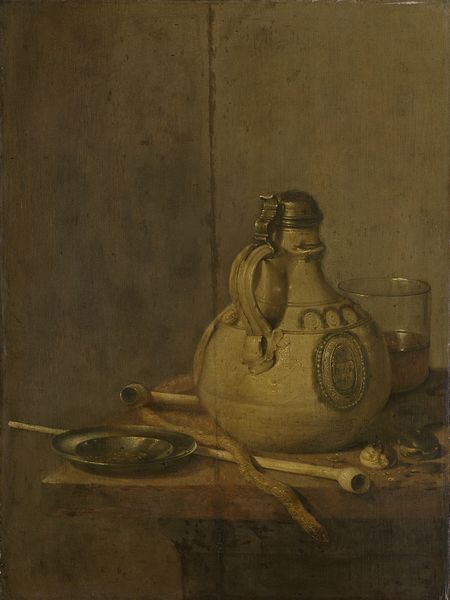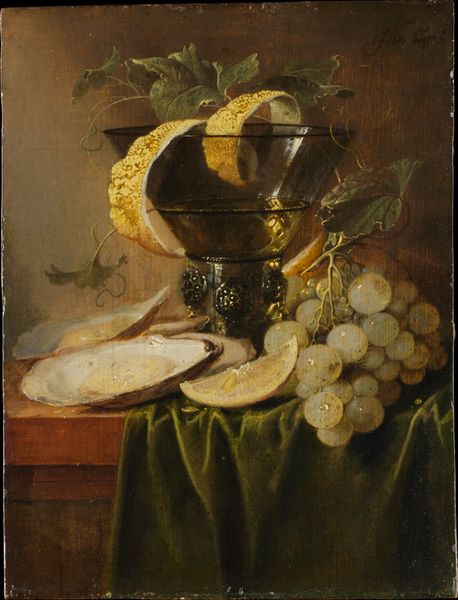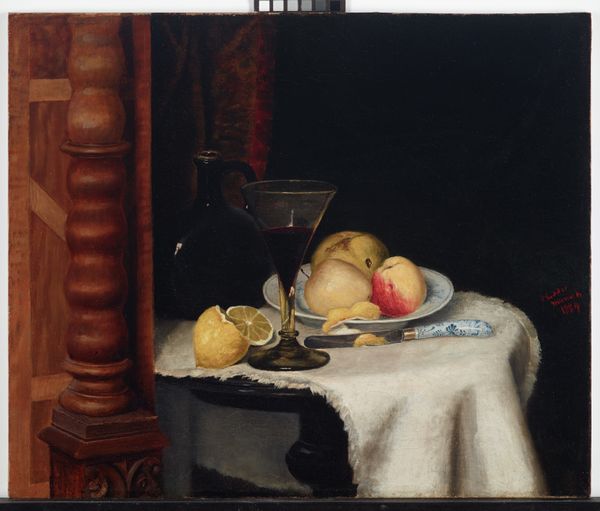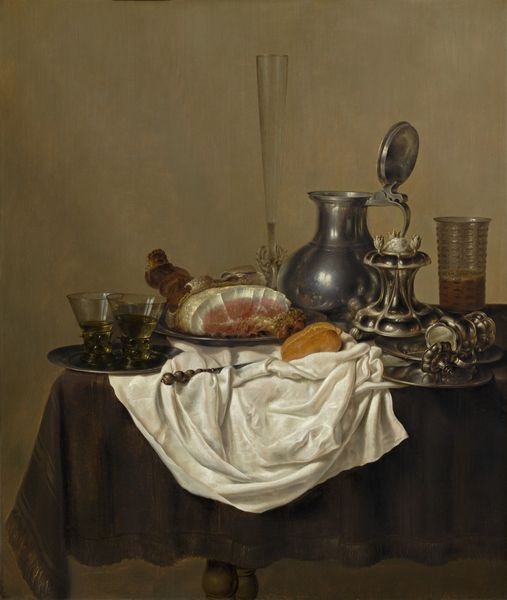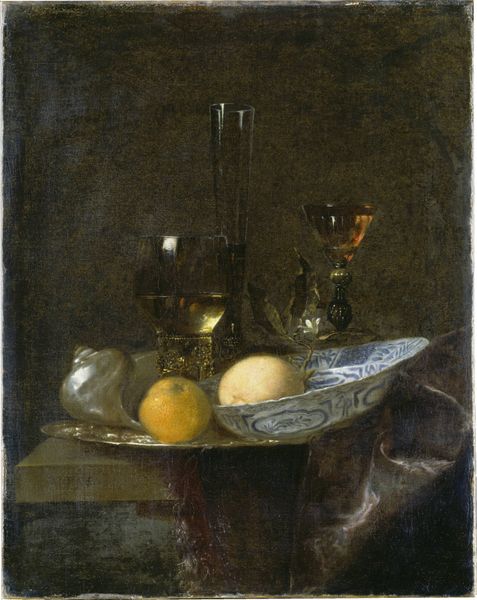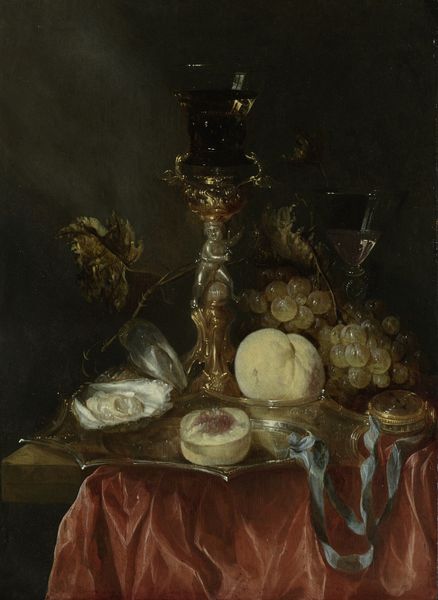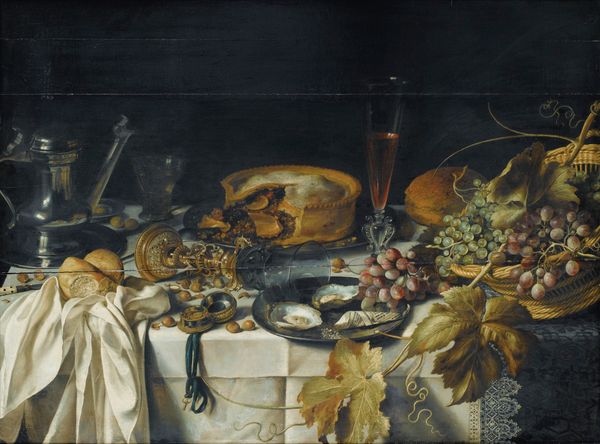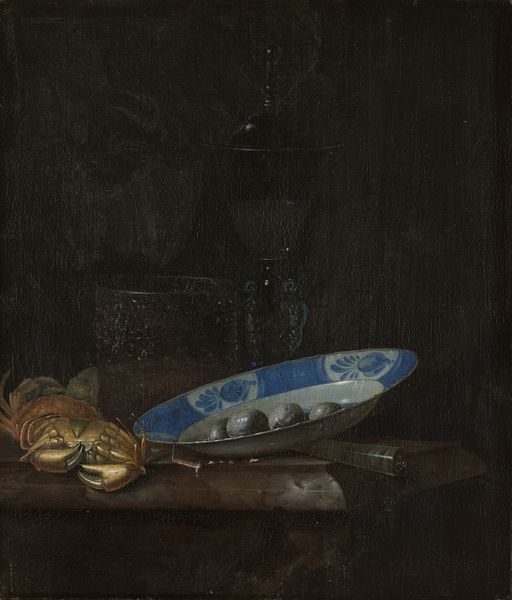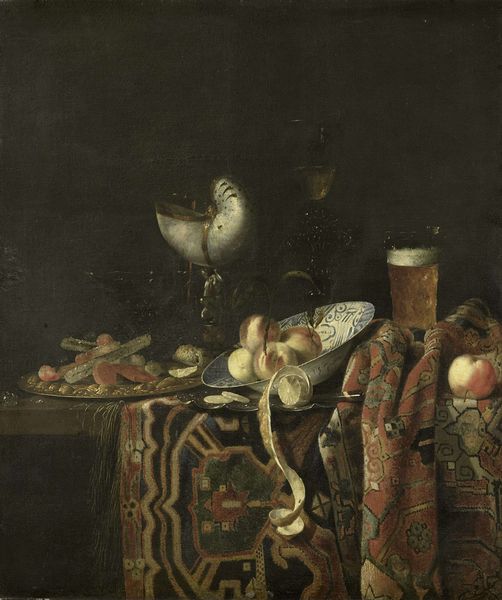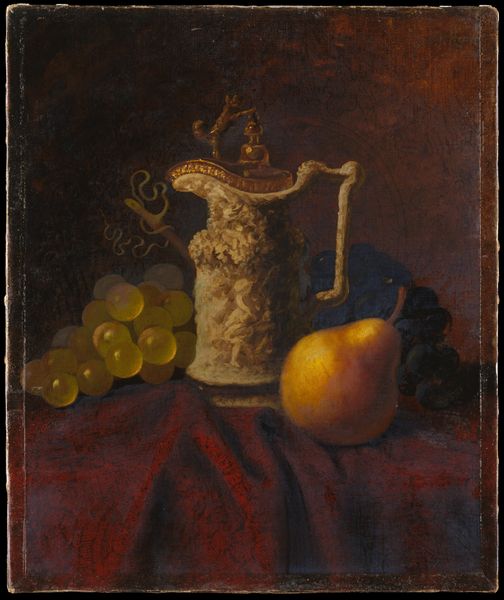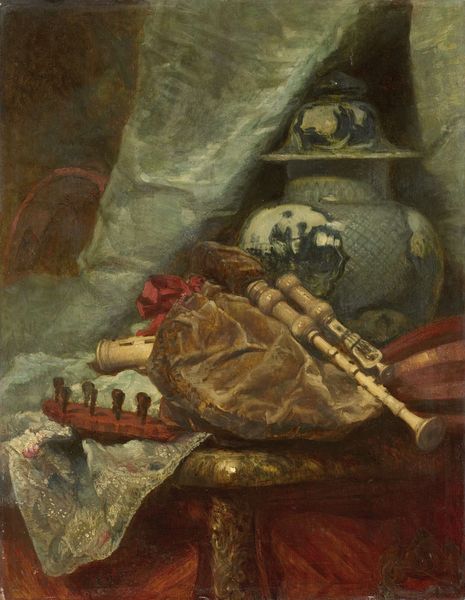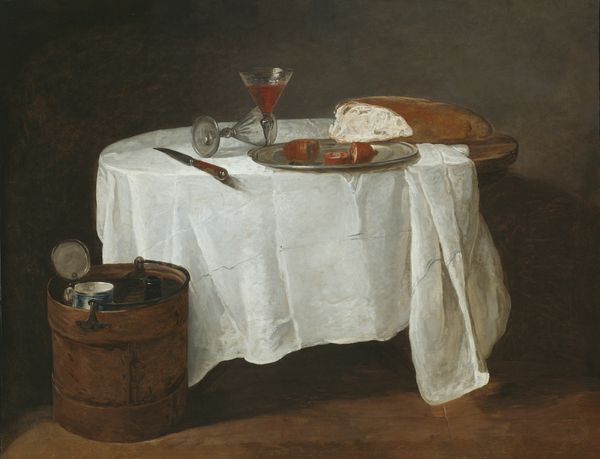
oil-paint
#
oil-paint
#
oil painting
#
romanticism
#
genre-painting
Dimensions: 6 1/4 x 7 1/2 in. (15.88 x 19.05 cm) (panel)12 x 13 1/4 x 3 in. (30.48 x 33.66 x 7.62 cm) (outer frame)
Copyright: Public Domain
Editor: Here we have Adolphe Félix Cals’s “Still Life with a Cucumber and a Pitcher,” painted in 1847. It's an oil painting, fairly small. The overall effect, with the muted palette, is rather humble. What’s your perspective on this piece? Curator: I find it interesting to consider Cals’s choice of everyday objects and his almost nonchalant treatment of them. What was the economic reality of the production and consumption of these items in 1847? Look at the coarse texture of the pitcher, contrasting with the smooth sheen of the glassware. It prompts one to consider the labor involved in their crafting. Editor: So you're suggesting the value lies not just in the representation, but in the implied history of these objects? Curator: Precisely! How does the presentation of these materials challenge the established hierarchy of art, blurring lines between 'fine art' and the utilitarian objects found in a middle-class home? The oil paint, after all, is rendered to mimic, almost imperfectly, the actual objects of everyday life. Editor: That makes me think about the accessibility of art, too. Was Cals trying to democratize the art world by representing common, domestic scenes? Curator: Potentially. He certainly subverts expectations. A lavish banquet would’ve been typical. Here we have humbler fare and a composition that is intimate. This shift perhaps signals a move towards valuing the everyday. What is being consumed and by whom? Consider this art’s historical positioning within broader trends of industrialization. Editor: I see what you mean. It's less about the ‘what’ and more about the ‘how’ and ‘why’ of these things. Food for thought! Curator: Indeed. Examining art through the lens of materiality unveils a complex narrative about value, production, and social hierarchies, doesn't it?
Comments
No comments
Be the first to comment and join the conversation on the ultimate creative platform.
